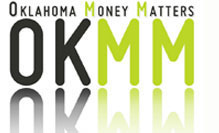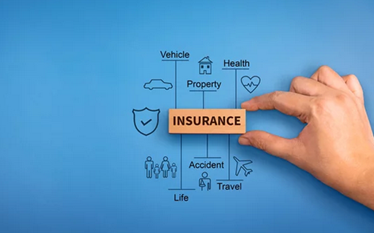Financial Literacy Standards
11. Insurance
Unfortunately, things can sometimes go wrong. And it often happens at the worst possible time. You could end up in a car accident, you might face a medical crisis, or your home could suffer damage from a storm. Even if these situations aren’t your fault, you’re still expected to pay for the costs involved, which can be really inconvenient or costly. That’s why insurance is so important!
Insurance is crucial because it provides a financial safety net, protecting individuals and businesses from the potentially devastating consequences of unexpected events. It allows people to manage risks, recover from losses, and maintain a sense of security in the face of uncertainties.
Section 1: Common risks
Having insurance and an emergency fund are vital proactive steps that help minimize the financial impact of unexpected repairs and expenses. By being prepared, individuals can avoid the burden of debt and navigate financial setbacks with greater ease.
Risks to individuals
- Financial Strain:
- Medical Expenses: Illnesses and accidents can lead to significant medical costs, including emergency services, hospital stays, doctors' fees, medication, and rehabilitation, potentially depleting savings or leading to medical debt.
- Income Loss: Injury or illness can lead to missed workdays, lost wages, or even long-term disability, significantly impacting an individual's ability to earn a living and maintain their lifestyle.
- Increased Cost of Living: Managing a disability or chronic illness can increase daily expenses and require home modifications or specialized care.
- Physical and Emotional Well-being:
- Chronic Pain and Disability: Accidents and illnesses can result in lasting physical limitations and chronic pain, affecting quality of life.
- Mental Health Issues: Financial stress and the impact of illness/accidents on daily life can contribute to anxiety, depression, and other mental health problems.
- Lifestyle Changes: Individuals may need to adjust their daily routines and activities due to physical limitations or the need for ongoing care.
Risks to property
- Direct Damage:
- Natural Disasters: Tornadoes, earthquakes, wildfires, and other natural hazards can cause extensive damage to structures, leading to costly repairs or even complete loss.
- Fires, Theft, and Vandalism: These events can also damage or destroy property and its contents, incurring repair or replacement expenses.
- Indirect Losses:
- Higher Insurance Costs: Properties in areas prone to natural disasters may face increased insurance premiums.
- Loan and Insurance Complications: Lenders may require additional insurance or upgrades for properties in high-risk areas.
- Legal Liabilities: Accidents on a property can lead to lawsuits for medical expenses, lost income, and other damages, potentially resulting in financial losses if liability insurance is not in place.
Risks to investments
- Market Volatility:
- Natural Disasters: These events can disrupt businesses, supply chains, and investor sentiment, leading to fluctuations in stock prices, bond values, and commodity prices.
- Recession and Inflation: Economic downturns or inflation can decrease property values and reduce returns on investments.
- Industry-Specific Impacts:
- Climate-Related Risks: Firms in certain sectors, such as agriculture, health, and manufacturing, are more susceptible to climate-related risks, which can affect stock prices and investment performance.
These risks highlight the importance of proactive measures like insurance, emergency funds, and diversification to mitigate the potential financial and personal impact of such unforeseen events.
Section 2: Insurance as a risk management strategy
Insurance plays a vital role in both risk and financial management. It acts as a safety net, protecting individuals and businesses from the financial impact of unforeseen events. While insurance can't eliminate risks entirely, it helps manage potential losses by transferring the financial burden to an insurance provider in exchange for premium payments.
A. Common types of insurance include:
- Health Insurance typically covers both routine and emergency medical expenses. Occasionally, this may also encompass vision and dental care, but that's not guaranteed. You might also need to pay a copay, which is an out-of-pocket expense for each visit to a healthcare provider.
- Home Insurance safeguards your home and belongings against issues like weather damage, vandalism, theft, or other damages. There are usually many flexible options and add-ons available, and each of these can affect the premium cost.
- Auto Insurance protects you in the event of an auto injury or damage to your vehicle or someone else's. Rather than covering expenses out of your own pocket for accidents and damages, the insurance company will handle most of the covered costs related to the incident or damage, depending on various factors.
- Life Insurance ensures that the insurer will provide a monetary sum to the designated beneficiaries upon your passing. In return, you pay premiums throughout your life.
- Travel Insurance takes care of expenses and losses related to traveling, including trip cancellations or delays, emergency healthcare coverage, evacuations, damaged luggage, and rental cars and homes. Be careful and make sure you fully understand what your travel insurance includes!
B. Different methods for obtaining insurance
Insurance can be obtained through various channels, primarily through employers, government programs, and directly from insurance companies or agents.
Here's a breakdown of the common methods:
- Employer-provided – Many employers offer health insurance or assistance as part of their benefit package. Check with your Human Resources department to see what's available and compare your options.
- Government plan – Depending on your income and circumstances, you might be eligible for a program like Medicaid, which offers free or low-cost coverage. Keep in mind that new federal regulations regarding Medicaid are currently being reviewed.
- Private purchase – If your employer does not offer insurance, and you do not qualify for a government plan, you can do some research on your own. There are some affordable plans depending on your own situation and your medical history. These plans offer various levels of coverage and you might be eligible for financial assistance based on your income.
Section 3: Appropriate amount of insurance
On all types of insurance, you’ll pay a monthly amount called a premium. Premiums take several factors into account such as your previous history, the cost of your house or car, your health status, or the type of coverage you’re hoping to get.
Policy limits are the maximum amount an insurer will pay to help cover your losses. Different limits can be set for different kinds of insurance and are based on your risk for the insurer.
The deductible is a specific amount you must pay out of pocket before an insurer will pay for your claim. If your deductible is $2,000, it means that’s how much you must pay before your insurer will help with the bill.
When determining the amount of insurance you’ll require to meet your needs and budget, consider these things:
- Evaluate Your Life Stage and Circumstances: Consider your family status, employment, health, lifestyle, and assets. The type of insurance needed will vary based on whether you own a home or car, or if you have dependents.
- Understand Different Types of Insurance: Research available insurance types, including life, health, disability, auto, and homeowners/renters.
- Assess Your Needs for Each Type: Evaluate your financial obligations and potential costs for each type of insurance, considering factors like dependents' needs for life insurance, typical healthcare expenses, ability to cover living costs if unable to work, and the value of assets for property insurance.
- Calculate the Coverage Amount: Use available resources or consult with a financial advisor to determine appropriate coverage based on your circumstances.
- Consider Affordability and Budget: Balance desired coverage with affordable premiums, prioritizing risks with the biggest financial impact.
- Review and Adjust Regularly: Reassess insurance needs after major life changes or annually.



